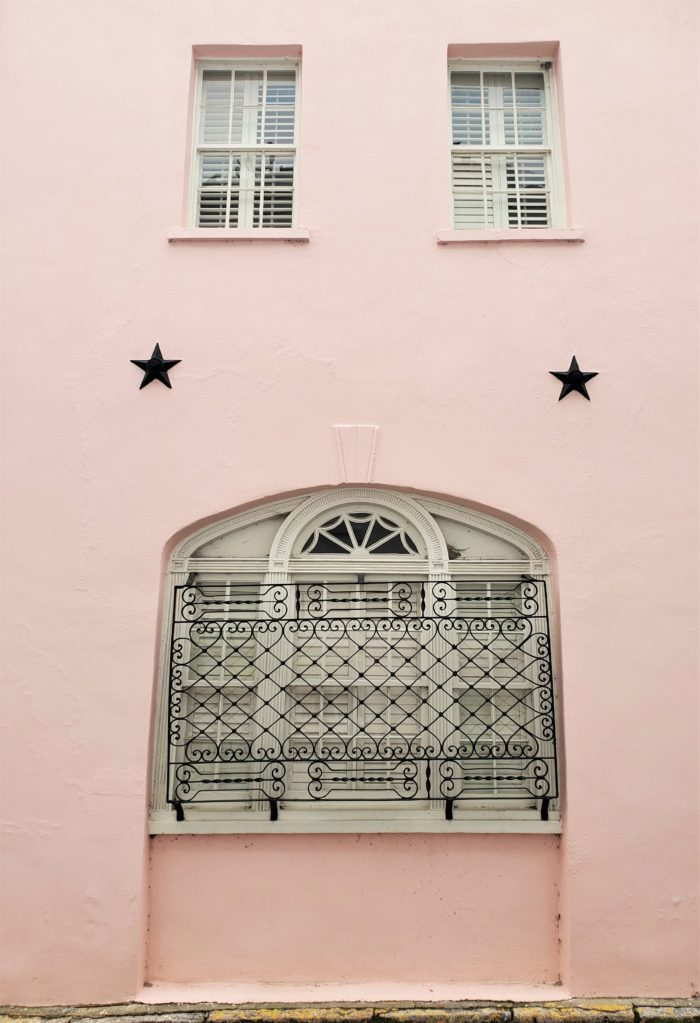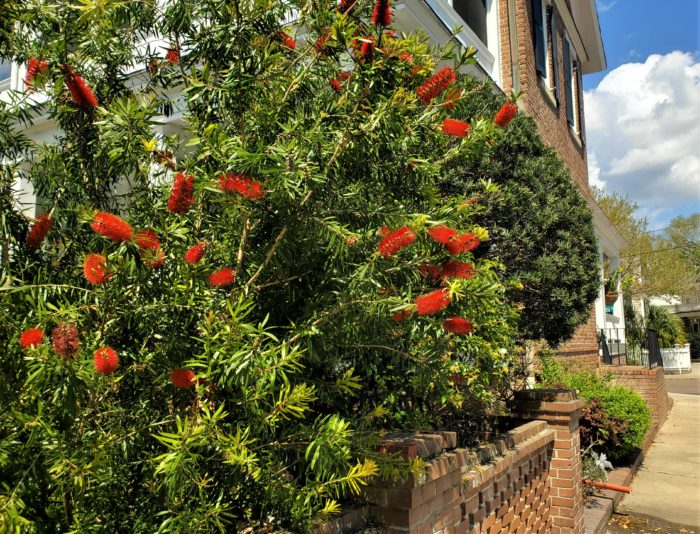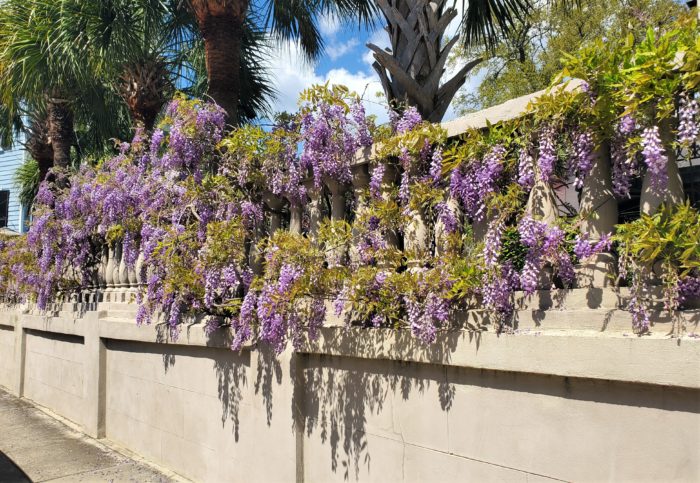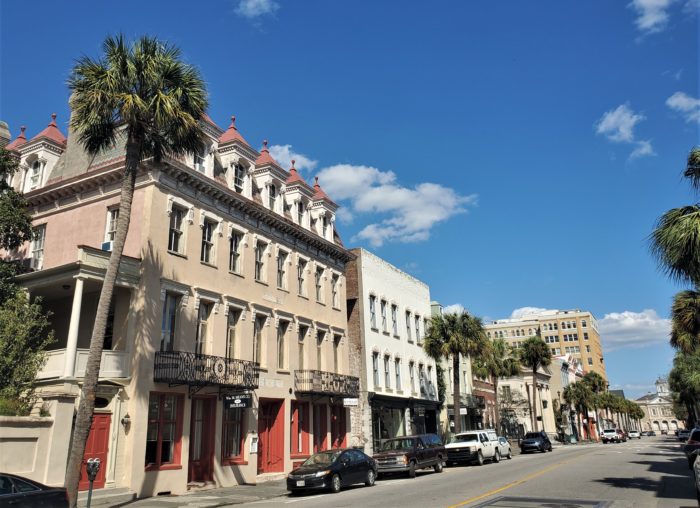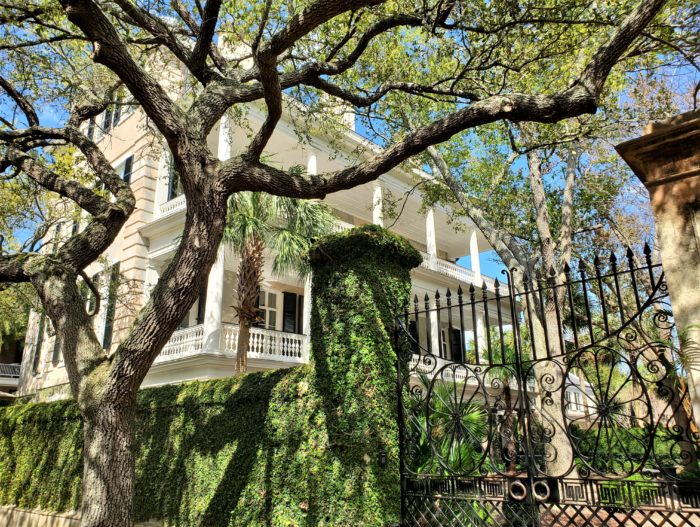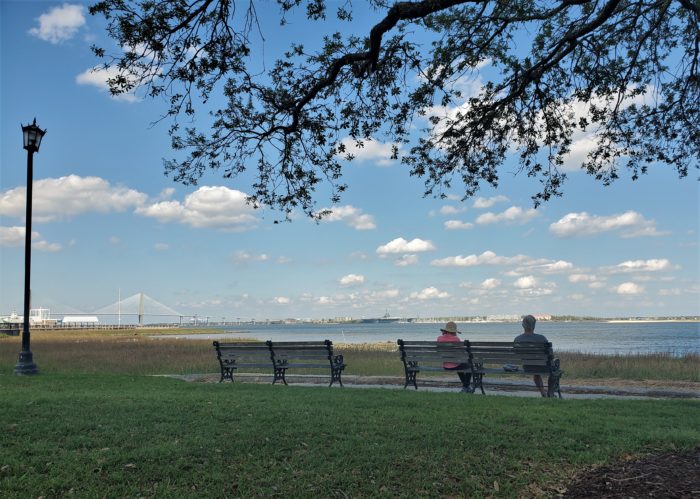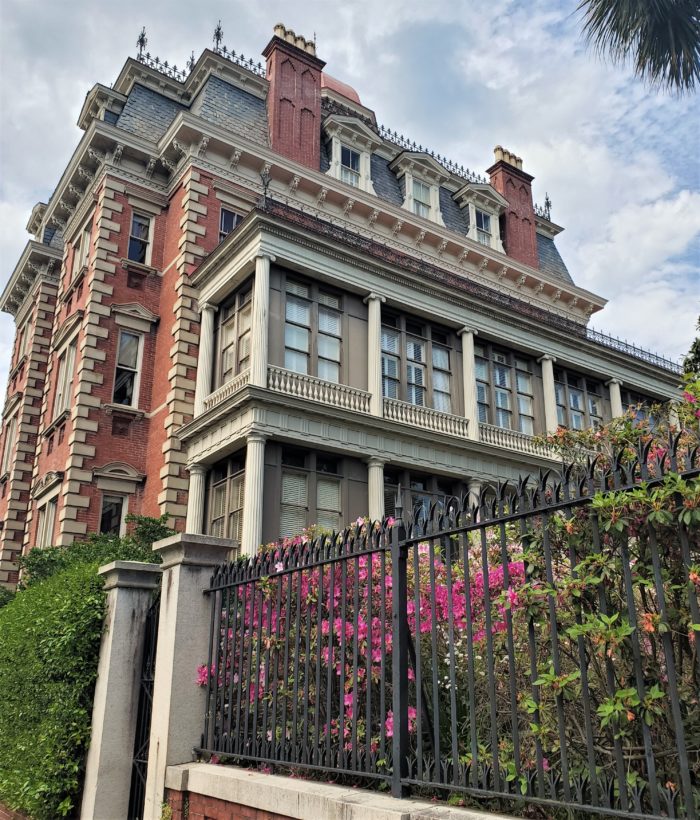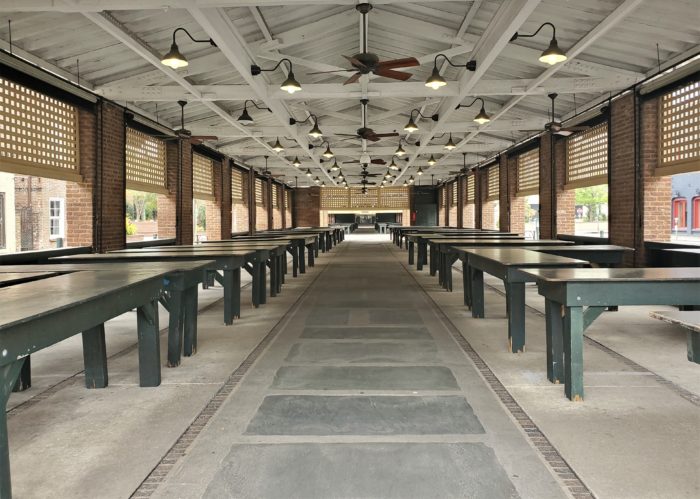The side of this building in St. Michael’s Alley has always reminded me of a face with dimples. The “dimples” are not, however, purely decorative. They are the end of earthquake bolts (or rods), which were used to strengthen the structural integrity of the building.
Stolls Alley
Stolls Alley, which connects East Bay to Church Street, is one of my favorite cut-thru’s in Charleston.
Bottlebrush
The bottlebrush plant is one of the most eye-catching, and aptly named, plants in Charleston.
Wonderful Wisteria
This beautiful wisteria is on the wall of 2 Water Street — a house built before 1818 by Nathaniel Ingraham, who sailed during the Revolutionary War with John Paul Jones on the famous Bon Homme Richard. Interestingly, the ship is named in honor of Benjamin Franklin. Richard was a pseudonym used by Franklin (think Poor Richard’s Almanac).
Beautiful Broad
Broad Street on a beautiful Charleston day. The incredible building on the left is the Confederate Home and College, which was built as a private home in 1800, became a hotel and then in 1867 became the Home for Confederate Widows and Orphans. Today it is still used as a home, but is also an events venue.
Antebellum Beauty
This antebellum beauty on Legare Street, built in 1857, is actually situated on land that used to be part of the Miles Brewton House — one of the most significant pre-Revolutionary War houses in the United States.
Social Distancing
Charleston is the first city in South Carolina to close their parks and and order people to stay home (unless on essential business or exercising) because if the COVID-19 virus. This photo was taken two days before the order went into effect, but some good social distancing in practice — even between this couple.
Arrows Up
These blooming azaleas are behind the fence at the Bowles-Legare House (c.1797) on Tradd Street. The fence, with its arrowhead pickets and crossed arrow gate, is an eye-catching handsome one.
Wentworth Mansion
The Wentworth Mansion, built c. 1886 as a private house on Wentworth Street, was once known as “the finest home in all of Charleston.” With about 24,000 square feet of space, it’s an amazing building. You can stay there, as it is now a spectacular 5 Star hotel.
City Market
You’d never know it by this photo, but the City Market is the most visited tourist destination in Charleston. Early in its evolution, it was a meat market — which accounted for the gathering of tremendous numbers of vultures, earning them the nickname of “Charleston eagles.”
- « Previous Page
- 1
- …
- 41
- 42
- 43
- 44
- 45
- …
- 188
- Next Page »
